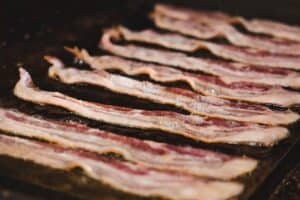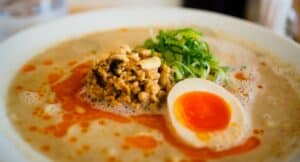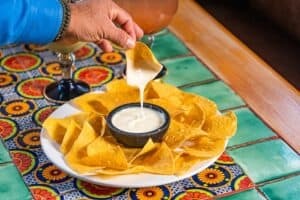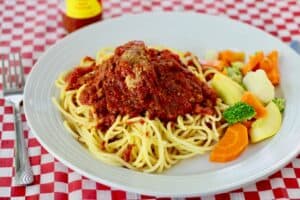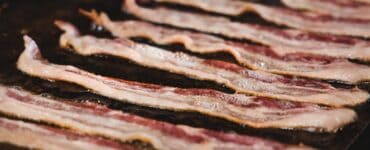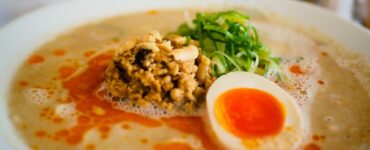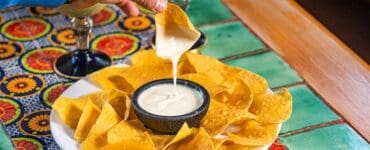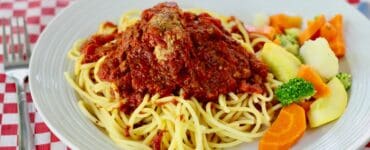Whether you’ve recently discovered that you have a gluten intolerance or you’re just looking to explore new culinary possibilities, this blog post is here to help you embark on your gluten-free journey. Gluten-free cooking and baking can seem intimidating at first, but with the right knowledge and techniques, you’ll soon be creating delicious gluten-free dishes that will delight your taste buds and satisfy your cravings.
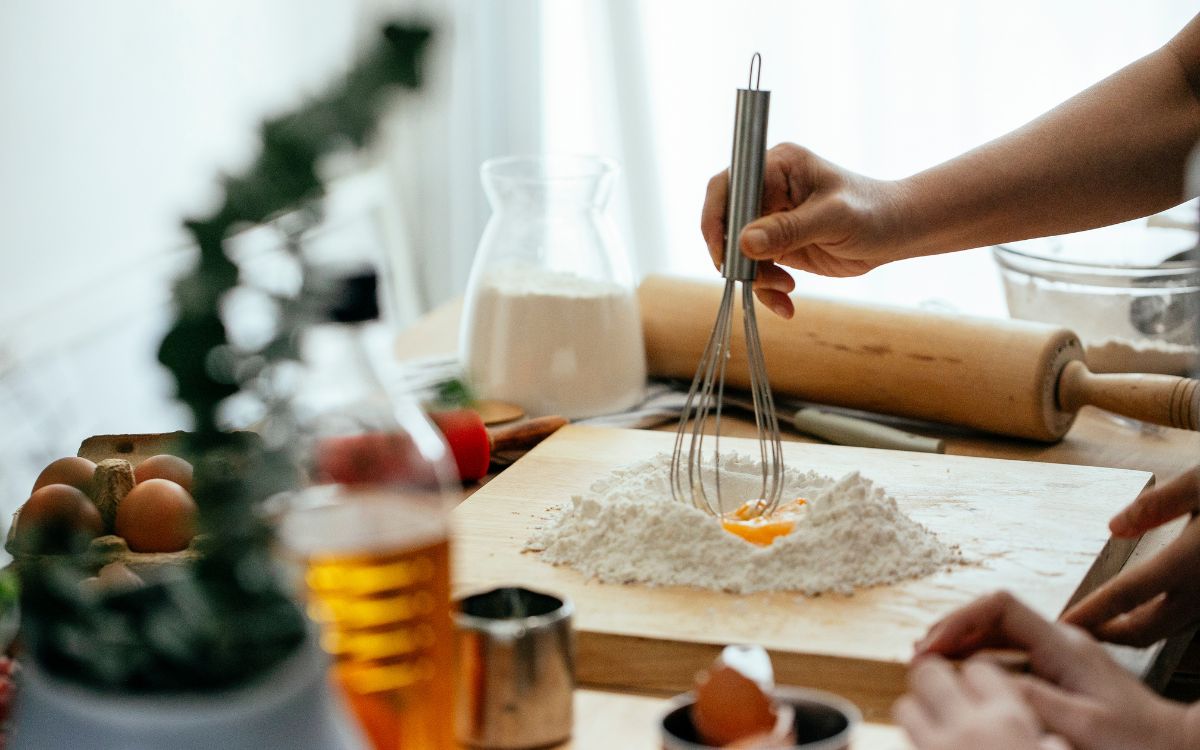
In this guide, we’ll cover the basics of gluten, explore gluten-free alternatives, and provide you with essential tips and recipes to get you started on your path to gluten-free culinary success. Let’s dive in and discover the wonderful world of gluten-free cooking and baking!
Getting Started with Gluten-Free Cooking
Understanding Gluten and Its Impact on Health
Gluten is a protein found in grains such as wheat, barley, and rye. For individuals with celiac disease, gluten triggers an immune response that damages the lining of the small intestine, leading to a range of symptoms and potential long-term health complications. Even those without celiac disease can experience gluten sensitivity or intolerance, which may cause digestive discomfort and other adverse effects. Understanding the impact of gluten on health is crucial in making informed choices about our dietary habits.
Common Foods that Contain Gluten
It’s important to identify common sources of gluten to effectively navigate the world of gluten-free cooking. Some everyday foods that typically contain gluten include bread, pasta, cereals, pastries, and many processed foods. Even seemingly innocent ingredients like soy sauce, certain condiments, and beer can contain gluten. Learning to recognize these hidden sources of gluten will empower you to make suitable substitutions and create meals that are truly gluten-free.
Benefits of Gluten-Free Cooking
Adopting a gluten-free lifestyle can offer various benefits, both for individuals with gluten-related disorders and those seeking a healthier diet. For individuals with celiac disease or gluten sensitivity, a gluten-free diet is necessary to alleviate symptoms and promote gut healing. Additionally, many people report increased energy levels, improved digestion, and a general sense of well-being when following a gluten-free diet. Embracing gluten-free cooking allows you to explore alternative ingredients and diversify your culinary repertoire.
Essential Ingredients and Substitutions for Gluten-Free Cooking
When transitioning to gluten-free cooking, it’s essential to familiarize yourself with alternative ingredients and substitutions that can replace gluten-containing ones. Various gluten-free flours, such as rice flour, almond flour, and tapioca flour, offer unique properties and flavors for different recipes. Xanthan gum and guar gum are commonly used as binders in gluten-free baking, while flaxseed and chia seeds can serve as egg substitutes. Discovering these essential ingredients and substitutions will enable you to achieve satisfying and successful gluten-free creations.
Building a Well-Stocked Gluten-Free Pantry
Having a well-stocked pantry is key to successful gluten-free cooking. It ensures you have the necessary ingredients on hand to whip up delicious meals without feeling limited by dietary restrictions. Stock up on gluten-free flours, grains, and starches, such as quinoa, millet, cornstarch, and potato starch. Invest in a variety of gluten-free condiments, sauces, and spices to enhance the flavor of your dishes. Don’t forget to include gluten-free baking essentials like baking powder, baking soda, and yeast. With a well-stocked gluten-free pantry, you’ll always be ready to create culinary delights.
Tips for Reading Food Labels and Identifying Hidden Sources of Gluten
When shopping for gluten-free ingredients and products, understanding how to read food labels is essential. Look for clear indications that a product is gluten-free, such as certified gluten-free logos or statements. However, not all gluten-free products may have these labels, so it’s important to check ingredient lists thoroughly. Learn to identify potential hidden sources of gluten, such as modified food starch, malt flavoring, or hydrolyzed vegetable protein. Familiarizing yourself with these label-reading tips will help you make informed choices and confidently select gluten-free options for your meals.
Gluten-Free Flours and Alternatives
Overview of Gluten-Free Flours and Their Properties
Gluten-free flours are the foundation of successful gluten-free cooking and baking. There is a wide array of gluten-free flours available, each with its unique properties and flavors. Rice flour, made from ground rice grains, is a versatile option commonly used in gluten-free recipes. It has a neutral taste and works well in both sweet and savory dishes. Almond flour, made from finely ground almonds, adds a delightful nuttiness and moisture to baked goods. It’s a popular choice for creating moist cakes and cookies. Other gluten-free flours like sorghum flour, coconut flour, and buckwheat flour offer distinct flavors and textures, allowing you to experiment and customize your recipes.
All-Purpose Gluten-Free Flour Blends and Their Usage
All-purpose gluten-free flour blends are convenient options for those who want to simplify their gluten-free cooking. These pre-mixed blends typically combine a variety of gluten-free flours and starches to achieve a texture and flavor similar to traditional all-purpose flour. They can be used as a direct replacement for wheat flour in many recipes, making the transition to gluten-free cooking easier. All-purpose gluten-free flour blends are ideal for baking bread, cakes, cookies, and other baked goods. They provide a reliable base for your recipes and often require minimal additional adjustments.
Nut and Seed Flours for Gluten-Free Baking
Nut and seed flours offer a delightful twist to gluten-free baking, adding unique flavors and textures to your creations. Almond flour, mentioned earlier, is a popular nut flour due to its versatility and mild taste. Hazelnut flour, made from ground hazelnuts, imparts a rich and nutty flavor. It works well in recipes like tortes and cookies. For those with nut allergies, seed flours like sunflower seed flour, pumpkin seed flour, or sesame flour can be excellent alternatives. These flours not only contribute to the flavor but also provide added nutrients, making them a nutritious choice for gluten-free baking.
Ancient Grains and Their Gluten-Free Varieties
Ancient grains have gained popularity in recent years due to their nutritional value and unique flavors. Many of these grains are naturally gluten-free, making them great options for those following a gluten-free diet. Quinoa, amaranth, millet, and teff are just a few examples of ancient grains that offer versatility in gluten-free cooking. Quinoa, known for its complete protein profile, can be used in various dishes, including salads, pilafs, and even as a flour substitute. Amaranth and millet add a pleasant nutty flavor and can be used in porridges, side dishes, or as alternative flours. Teff, with its rich and earthy taste, is commonly used in Ethiopian cuisine and is ideal for making injera, a traditional fermented flatbread.
Incorporating Alternative Binders and Thickeners
Gluten plays a crucial role in providing structure and elasticity in traditional baking. When gluten is absent, alternative binders and thickeners are necessary to achieve similar results. Xanthan gum and guar gum are common additives used in gluten-free baking to mimic the binding properties of gluten. They help improve the texture and prevent crumbly or dry results. Other natural binders like ground flaxseed or chia seeds can be used as egg substitutes in recipes, providing moisture and acting as binding agents. These alternative binders and thickeners ensure that your gluten-free baked goods have the desired texture and consistency.
Essential Techniques for Gluten-Free Cooking and Baking
Adjusting for Texture and Moisture in Gluten-Free Recipes
Gluten-free recipes often require adjustments to achieve the desired texture and moisture level. Without the binding properties of gluten, gluten-free baked goods can turn out dry or crumbly. To combat this, incorporating additional moisture-rich ingredients such as applesauce, yogurt, or mashed fruits can help retain moisture in your baked goods. Adding a bit more fat, such as butter or oil, can also contribute to a softer texture. It’s important to experiment and find the right balance of ingredients to achieve the desired outcome in your gluten-free recipes.
Mixing Techniques for Gluten-Free Dough and Batter
Mixing techniques play a crucial role in gluten-free cooking and baking. Unlike traditional recipes, gluten-free dough and batter should not be overmixed, as it can lead to a dense or gummy texture. Mix the ingredients until they are just combined, ensuring that the dry and wet ingredients are evenly distributed. Avoid overmixing to prevent excessive development of the proteins and starches present in gluten-free flours. When working with gluten-free dough, gentle handling is key to avoid overworking the mixture and compromising the final result.
Enhancing Flavor and Texture in Gluten-Free Baked Goods
Gluten-free baked goods can sometimes be perceived as lacking in flavor and texture compared to their gluten-containing counterparts. However, there are various ways to enhance both aspects in your gluten-free creations. Adding additional flavorings such as vanilla extract, spices, or citrus zest can elevate the taste profile of your recipes. Incorporating ingredients like chocolate chips, dried fruits, or nuts can provide interesting textures and added bursts of flavor. Experimenting with different gluten-free flours and their combinations can also contribute to a more satisfying texture and taste in your baked goods.
Understanding the Role of Gums and Starches in Gluten-Free Recipes
Gums and starches are commonly used in gluten-free recipes to improve the texture and binding properties of the final product. Xanthan gum and guar gum are popular choices as they help mimic the elasticity that gluten provides. These gums work by absorbing moisture and creating a gel-like consistency, which helps prevent crumbling and improve the structure of gluten-free baked goods. Starches like cornstarch, potato starch, or tapioca starch are often used to lighten the texture and improve the crumb of gluten-free bread and pastries. Understanding the role of these gums and starches will help you navigate gluten-free recipes and achieve better results.
Tips for Preventing Cross-Contamination in the Kitchen
Cross-contamination is a significant concern for individuals following a strict gluten-free diet. Even a small trace of gluten can trigger adverse reactions in those with celiac disease or gluten sensitivity. To prevent cross-contamination, it’s essential to take precautions in the kitchen. Designate separate cutting boards, utensils, and baking equipment specifically for gluten-free use. Thoroughly clean surfaces, utensils, and pans before preparing gluten-free meals. Be cautious when using shared condiments and spreads, as crumbs from gluten-containing products can contaminate them. By implementing these practices, you can ensure the safety and integrity of your gluten-free cooking and baking endeavors.
Dining Out and Traveling Gluten-Free
Dining out can be a bit challenging when following a gluten-free diet, but with the right approach, it’s entirely possible to enjoy a safe and delicious meal. When choosing a restaurant, look for establishments that offer gluten-free options or have a gluten-free menu. Nowadays, many restaurants are aware of dietary restrictions and are accommodating to gluten-free diners. Once at the restaurant, don’t hesitate to inform the server about your gluten-free needs. Ask questions about ingredients, cooking methods, and cross-contamination prevention measures. Seek clarification on potential hidden sources of gluten, such as sauces, marinades, or thickeners. By communicating your dietary requirements clearly, you can ensure a safer dining experience.
Traveling Gluten-Free: Planning Ahead
Traveling while following a gluten-free diet requires a bit of extra planning, but it doesn’t have to be daunting. Before your trip, research gluten-free options and restaurants at your destination. Look for local resources, such as gluten-free dining guides or online communities, that can provide recommendations and insights. If possible, pack gluten-free snacks or meal options for the journey, ensuring you have something safe to eat if suitable options are limited. When booking accommodations, consider options like vacation rentals or accommodations with kitchen facilities, allowing you to prepare your own gluten-free meals. By planning ahead, you can reduce stress and enjoy your travel experience while maintaining a gluten-free lifestyle.
Communicating with Airlines and Transportation Services
If you’re traveling by air or utilizing other forms of transportation, it’s essential to communicate your gluten-free dietary needs in advance. Many airlines and transportation services offer special meal requests, including gluten-free meals. When booking your tickets, notify the airline or transportation company about your dietary requirements. They can provide you with gluten-free meal options during your journey. However, it’s important to double-check and confirm your meal request closer to the travel date to ensure everything is in order. Having a gluten-free meal during your travel can make the journey more comfortable and enjoyable.
Snacks and On-the-Go Options
Having gluten-free snacks on hand is essential, whether you’re traveling or simply out and about. Pack portable snacks like gluten-free granola bars, trail mix, rice cakes, or fruit to keep hunger at bay. Many health food stores and supermarkets offer a wide variety of gluten-free snacks that are convenient for on-the-go situations. If you’re uncertain about the availability of gluten-free options at your destination, it’s always a good idea to carry a few snacks with you. Additionally, research local grocery stores or health food shops at your destination, as they may carry gluten-free products that you can purchase during your trip.
Exploring Local Cuisine Safely
One of the highlights of traveling is experiencing the local cuisine. With some careful planning and communication, you can explore local flavors while staying gluten-free. Research traditional dishes and ingredients of the region you’re visiting. Learn about gluten-free options or adaptations of local specialties. When dining at local eateries, communicate your dietary needs to the staff, asking for gluten-free recommendations or modifications. By being open and proactive, you can savor the authentic flavors of your destination without compromising your gluten-free lifestyle. Embrace the opportunity to try new dishes and ingredients, and enjoy the culinary adventures that travel brings.
Conclusion
By understanding the basics of gluten, exploring gluten-free alternatives, and learning essential tips and recipes, you’re now equipped with the knowledge and skills to create delicious and satisfying gluten-free dishes. Remember, practice makes perfect, so don’t be discouraged if your first attempts aren’t exactly what you envisioned. Keep experimenting, trying new recipes, and refining your techniques. With time, you’ll become a confident and creative gluten-free cook or baker.

